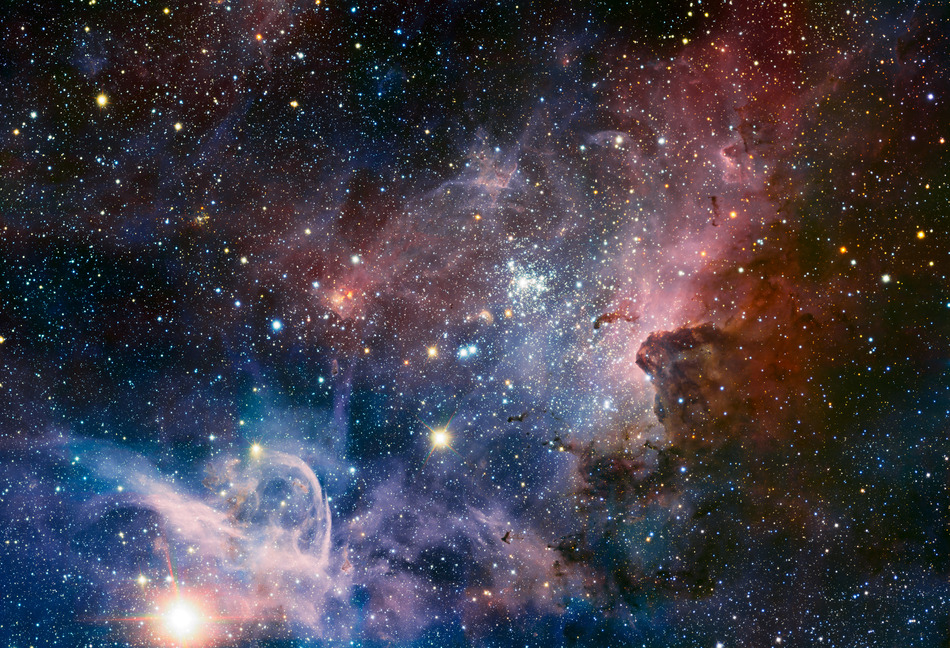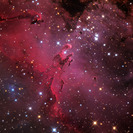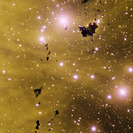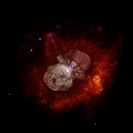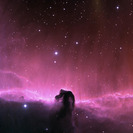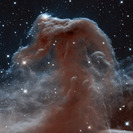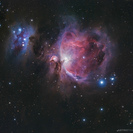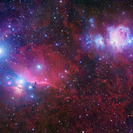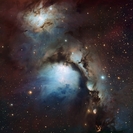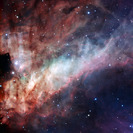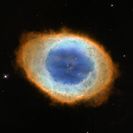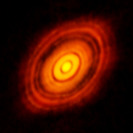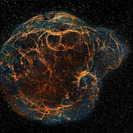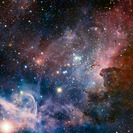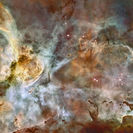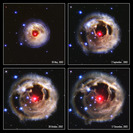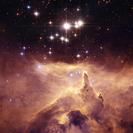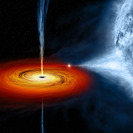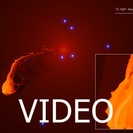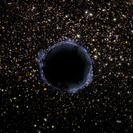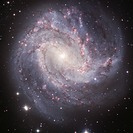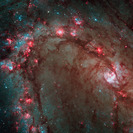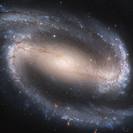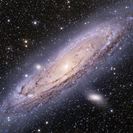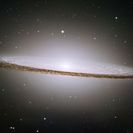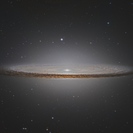The Great Carina Nebula is another nebula that has it all: red emission nebulae, blue reflection nebulae, dark nebulae, open star clusters and, additionally, one of the most massive and brightest stars in our galaxy: Eta Carinae. This star - which can be seen to the lower left of the image - has a mass of between 100 and 150 solar masses and shines more than 4 000 000 times brighter than our Sun. Eta Carinae is called a supernova imposter: it could go supernova any time within the next few hundred thousand years. Fortunately its axis of rotation is not pointing towards us; if this was the case a supernova at that distance (8000 light years) could cause severe damage to Earth's atmosphere. During a supernova of such a massive star a huge amount of energy is released bundled in jets along the axis of rotation (gamma-ray bursts) so that even at a distance of 8000 light years the radiation on the surface of the Earth would reach 10 times the lethal dose. Check our image of Eta Carinae or read our supernova article to better understand this phenomenon. The whole nebula spans an area larger than the moon as seen from Earth... or more than 300 light years in absolute numbers. And finally Sun.org features an absolutely stunning false colour image of the Carina Nebula!
If interested, read more about: Emission nebula - Reflection nebula - Molecular Clouds and Dark Nebulae